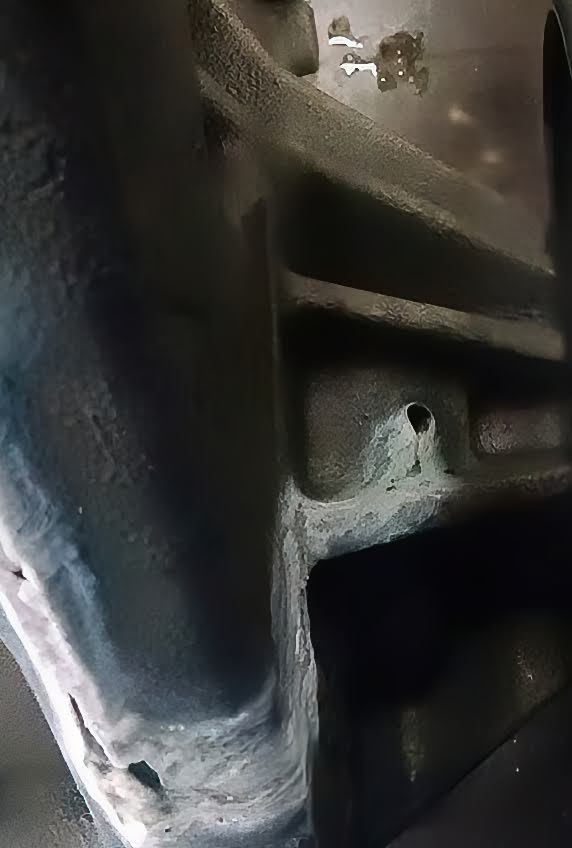The water pump and timing belt are two critical engine components. Even if they serve different purposes, their roles are connected in many ways—so much so that they are often replaced together.
Replacing the Timing Belt and Water Pump Together

Note, however, that when the water pump is driven by the serpentine belt and not the timing belt, there’s no reason to replace them at the same time.
It’s practical to replace both at the same time (when the water pump is directly driven by the timing belt) to spend less time removing different components to access them and cut down on labor costs. The timing belt and water pump are also parts of the synchronous drive, which means both would benefit from having the same level of degradation and wear. If one is more worn than the other, the parts will degrade faster.
In other words, if the water pump is driven by the timing belt, you can replace just the timing belt, but if the water pump fails it can take the timing belt with it when it dies. It’s not advisable to replace the water pump but not the timing belt if the belt drives the water pump, since you’ve already got the timing belt out of the way.
As for how often the timing belt and water pump should be replaced, manufacturer recommendations range from 60,000 to 100,000 miles.
How Much Does It Cost to Change a Timing Belt and Water Pump?
The cost to replace a timing belt and water pump depends on the make and model of your vehicle. However, you can expect to spend between $500 and $1,200 total on parts and labor.
On one hand, replacing the timing belt typically costs between $400 and $1,000. On the other hand, replacing the water pump costs between $600 and $1,200. Luckily, replacing both at the same time cuts down labor costs exponentially, saving you both time and money.
Signs You Should Replace the Water Pump and Timing Belt
Since the timing belt and water pump should be replaced at the same time, it’s important to know when it’s time to replace either of the two parts. Fortunately, there are clear indicators when a timing belt or a water pump is damaged and due for a replacement.
Signs It’s Time for a Water Pump Replacement
It’s a good idea to consider replacing the water pump if it’s leaking or the bearings are making noise. If the water pump locks up, the engine will stall if the timing belt is driving the pump.
If the impeller on the water pump is compromised or the reaction surface is electrolysis or rust-pitted (you can’t see this without removing the pump), the water pump won’t work efficiently. Usually the first thing you notice then is that the heater isn’t warm even though the engine is at full operating temperature and the cooling system is full and everything else is working properly.
Let’s take a look at more signs:
Engine Overheats Frequently
An inefficient water pump won’t run coolant through the engine properly. If the shaft seal leaks so that the engine runs low on coolant, overheating will be a concern.
Coolant Leaks
If you’ve noticed coolant leaking and dripping underneath your vehicle, there’s a good chance the water pump is damaged and due for repair or replacement. Water pumps in older vehicle models may need to be replaced anywhere between 60,000 and 100,000 miles.

Rust Buildup in the Coolant
Rust and corrosion in the coolant, particularly if there are rust flakes, can damage the water pump seal. If electrolysis due to acidic coolant begins to attack the ferrous parts of the engine block and the water pump impeller is steel, the impeller will begin to rust away along with the rest of the engine, leading to reduced coolant movement due to the increasing gap between the impeller blades and the reaction surface.
Strange Noises in the Engine
If you hear high-pitched squealing noises coming from within the engine, it can be any moving part or whistling air leak, but have a look at the water pump. On serpentine belt drive pumps, you need to remove the belt and check the pump by hand for looseness or rough bearings.
When Should You Get a Timing Belt Replacement?
The most common signs it’s time to replace your vehicle’s timing belt include excessive exhaust fumes, frequent engine misfires, strange noises in the engine, and poor engine performance.
Excessive Exhaust Fumes
Excessive exhaust fumes can become an issue if a timing belt jumps a few teeth but the engine still runs, although sometimes no extra fumes are noticed when the engine is out of time. Sometimes you just notice a loss of power, but usually, the timing belt will jump entirely and the engine will stall and not restart.
Frequent Engine Misfires
There are several possible explanations as to why an engine misfires. One of the most common is bad spark plug wires that may strain the timing belt.
If the timing belt is damaged or too worn to work properly, the engine will misfire more frequently. If this happens, it’s important to replace the timing belt and the bad spark plug wires as soon as possible.
Strange Noises in the Engine
When the timing belt gets worn and loose, it can slap the timing cover and make odd noises. This indicates that it has to be replaced before it breaks completely.
Poor Engine Performance
If your vehicle’s performance suddenly declines, there might be something wrong with your timing belt. An engine that runs poorly is a common problem that occurs when the timing belt is loose. Timing belts that aren’t installed properly or have become too worn skew engine valve timing, negatively impacting performance.
Any information provided on this Website is for informational purposes only and is not intended to replace consultation with a professional mechanic. The accuracy and timeliness of the information may change from the time of publication.







































